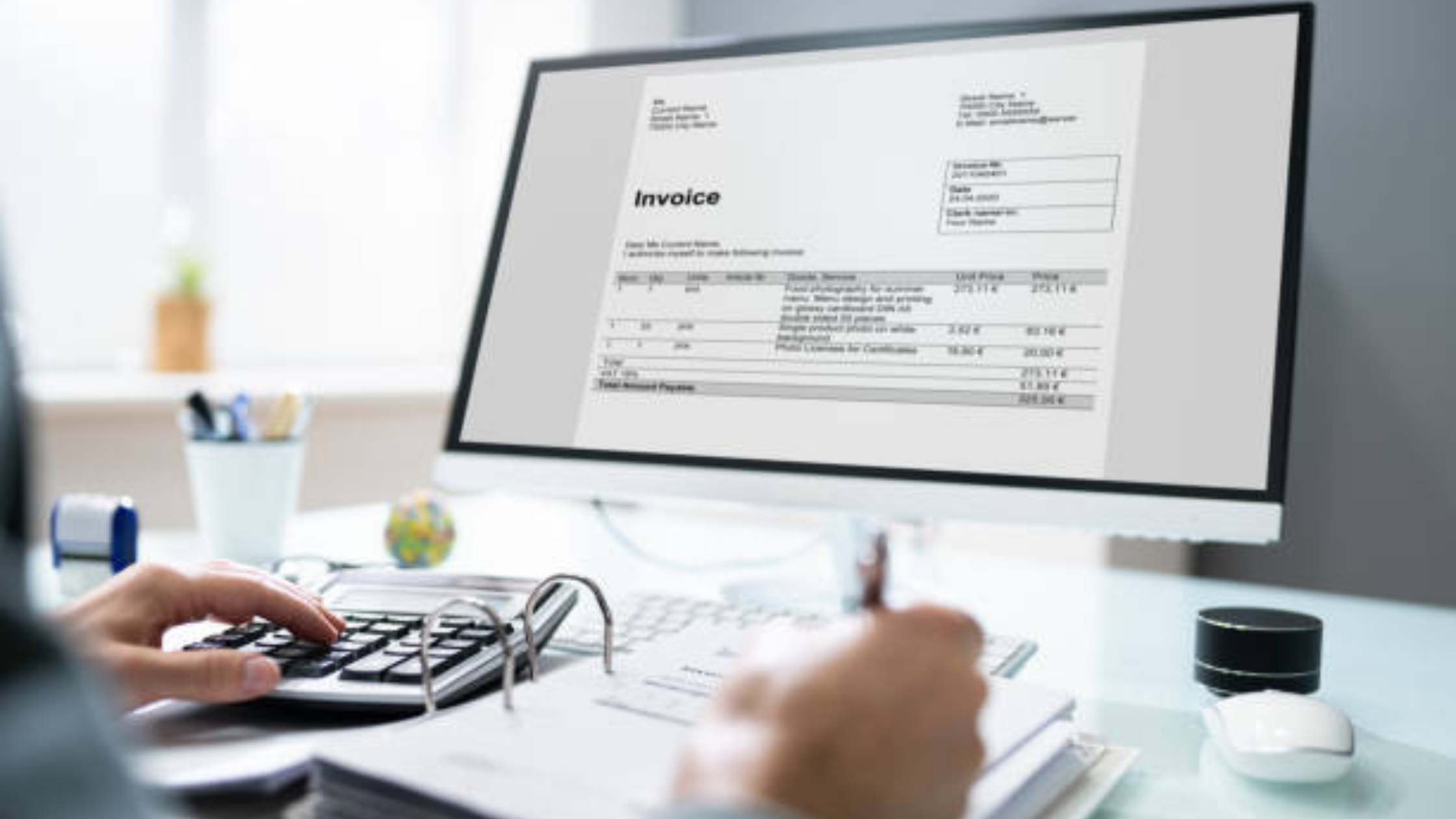Convenient Salary Receipts Generation for Businesses

Efficiency in Business
Efficiency is crucial in the fast-paced world of business. One often overlooked aspect is the generation of salary receipts. Businesses require a streamlined process for this task. Implementing automated systems or user-friendly software simplifies creating and distributing salary receipts to employees. This not only saves time and resources but also ensures accuracy and compliance. Speed and precision are vital. A reliable system for salary receipt generation can significantly impact a business's smooth operation. Let's explore the importance and benefits further.
Challenges of Traditional Salary Receipt Generation
Manual Processes and Limitations
In the traditional method of generating salary receipts, HR departments often rely on manual processes to input and calculate salary information. This manual data entry is not only time-consuming but also prone to errors. The limitations of manual processes can lead to inaccuracies in salary receipts, causing frustration among employees.
Time-Consuming Nature of Manual Generation
Another challenge faced in traditional salary receipt generation is the time-consuming nature of the process. HR personnel spend significant amounts of time inputting data, calculating salaries, and generating individual receipts. This manual effort could be better utilized in more strategic HR functions if automated systems were in place.
Potential Errors in Manual Systems
Manual systems are inherently prone to errors, which can have serious consequences when it comes to salary receipts. From simple data entry mistakes to miscalculations, the potential for errors in manual systems is high. These errors not only impact individual employees but can also lead to compliance issues for the organization.
Lack of Scalability and Adaptability
One major drawback of traditional salary receipt generation methods is the lack of scalability and adaptability. As organizations grow, manual processes become increasingly inefficient and impractical. Manual systems struggle to handle the complexities of a larger workforce, leading to bottlenecks and delays in salary processing.
Security Risks and Data Privacy Concerns
With manual salary receipt generation, there are inherent security risks and data privacy concerns. Storing sensitive employee information in spreadsheets or physical documents increases the likelihood of data breaches or unauthorized access. Automated systems offer enhanced security features and data encryption to protect employee data.
Compliance Challenges and Audit Trail Issues
Maintaining compliance with labor laws and regulations is crucial for organizations. Manual salary receipt generation makes it challenging to ensure accurate record-keeping and audit trails. Automated systems provide a digital footprint of all salary transactions, simplifying compliance efforts and reducing the risk of non-compliance penalties.
Transitioning to Automated Solutions
In light of these challenges, many organizations are transitioning to automated solutions for salary receipt generation. Automated systems offer benefits such as increased accuracy, faster processing times, and improved data security. By leveraging technology, HR departments can streamline their processes, enhance efficiency, and provide a better experience for employees.
Overall, the challenges associated with traditional salary receipt generation underscore the importance of embracing automation to overcome limitations, improve accuracy, and ensure compliance in today's dynamic business environment.
Advantages of Automated Salary Receipt Generation
The automation of various processes has become essential for organizations to stay competitive and efficient. One such process that can benefit greatly from automation is salary receipt generation. Let's delve into the advantages of implementing automated systems for generating salary receipts:.
Enhanced Efficiency and Time-Saving Benefits
Automated salary receipt generation streamlines the entire process, reducing the time and effort required to manually create and distribute receipts. This not only saves valuable time for the HR department but also ensures that employees receive their salary receipts promptly.
Improved Accuracy and Compliance.
Manual generation of salary receipts is prone to errors, which can lead to discrepancies and compliance issues. By automating this process, organizations can significantly reduce the risk of errors and ensure that all salary receipts are accurate and compliant with relevant regulations.
Customization Options for Branding.
Automated salary receipt generation systems often come with customization options that allow organizations to incorporate their branding elements into the receipts. This not only enhances the professional look of the receipts but also reinforces the organization's brand identity among employees.
Automated systems for salary receipt generation offer a myriad of advantages that go beyond just efficiency and accuracy. Let's explore further:.
Enhanced Security and Confidentiality
Automation ensures that sensitive salary information is handled securely, reducing the risks associated with manual handling of such data. With proper encryption and access controls, automated systems provide a higher level of confidentiality for salary receipts.
Scalability and Flexibility.
As organizations grow, the volume of salary receipts also increases. Automated systems can easily scale to accommodate this growth without compromising on speed or accuracy. Additionally, these systems offer flexibility in terms of generating different types of salary receipts based on varying employee needs.
Audit Trail and Reporting Capabilities.
Automated salary receipt generation systems maintain detailed audit trails, allowing organizations to track every step of the receipt creation process. This not only enhances transparency but also facilitates compliance with auditing requirements. Moreover, these systems often come equipped with reporting capabilities that provide valuable insights into salary distribution trends and patterns.
The adoption of automated systems for salary receipt generation brings a host of benefits, ranging from efficiency and accuracy to security and scalability. By leveraging automation in this critical aspect of employee compensation, organizations can streamline operations, enhance data security, and improve overall compliance and reporting processes.
Key Features of Modern Salary Receipt Generation Tools
Businesses are constantly seeking ways to streamline their processes and improve efficiency. One area that has seen significant advancements is salary receipt generation tools. These tools not only simplify the payroll process but also enhance data security and customization. Let's delve into the key features that make modern salary receipt generation tools indispensable:.
- Diverse Templates and Customization Features
Modern salary receipt generation tools offer a wide range of templates to choose from, allowing businesses to create professional and personalized salary receipts. Moreover, these tools often come with customization features that enable users to add company logos, colors, and other branding elements to the receipts. This level of customization helps in creating a unique identity for the organization and enhances the overall professional look of the salary receipts.
- Seamless Integration with Payroll Systems
Integration with existing payroll systems is crucial for ensuring a smooth and efficient salary receipt generation process. Modern tools are designed to seamlessly integrate with various payroll software, eliminating the need for manual data entry and reducing the risk of errors. Additionally, this integration ensures that all salary information is accurately transferred from the payroll system to the receipt generation tool, minimizing discrepancies and saving time for HR and finance departments.
- Robust Security Measures for Data Protection
Data security is a top priority for businesses, especially when it comes to sensitive payroll information. Modern salary receipt generation tools employ robust security measures such as encryption, access controls, and regular data backups to protect confidential employee data from unauthorized access or breaches. These tools also often comply with industry standards and regulations to ensure that the payroll data is handled securely and in compliance with data protection laws.
- Automated Calculations and Error Detection
Another key feature of modern salary receipt generation tools is their ability to automate calculations and detect errors in the salary information. By leveraging advanced algorithms, these tools can accurately calculate salaries, deductions, and taxes, reducing the chances of manual errors. Moreover, the error detection feature helps in identifying discrepancies or inconsistencies in the salary data, allowing for timely corrections and ensuring accurate salary payments to employees.
The key features of modern salary receipt generation tools make them essential for businesses looking to streamline their payroll processes, enhance data security, and improve overall efficiency. By leveraging these tools, organizations can ensure accurate and timely salary payments while maintaining the highest standards of data protection and efficiency in their payroll operations.
Selecting the Ideal Salary Receipt Generation Tool
Businesses are constantly seeking ways to streamline their processes and improve efficiency. One such area that often requires attention is salary receipt generation. With numerous tools available in the market, selecting the ideal one can be a daunting task. In this blog section, we will explore the key points to consider when choosing a salary receipt generation tool.
Review of Tool A: Features and Benefits
Tool A is a popular choice among businesses for its wide range of features and benefits. From customizable templates to automated calculations, this tool offers a comprehensive solution for salary receipt generation. In this section, we will delve into the specific features that make Tool A stand out from the competition. Additionally, we will discuss how these features can enhance the overall efficiency of the salary receipt generation process, ultimately saving time and reducing errors.
Comparison of Tool B: User Feedback and Ratings
User feedback and ratings play a crucial role in determining the effectiveness of a tool. In this segment, we will analyze the user feedback and ratings of Tool B to understand its strengths and weaknesses. By examining real-life experiences, we can gain valuable insights into the usability and performance of this tool. Furthermore, we will explore how user feedback has influenced the development of Tool B, leading to potential improvements and updates that cater to the needs of its users.
Evaluation of Tool C: Pricing and Scalability
Cost-effectiveness and scalability are key factors to consider when selecting a salary receipt generation tool. Tool C offers competitive pricing plans and the ability to scale according to business needs. We will assess the pricing structure and scalability options of Tool C to determine its suitability for different business sizes. Moreover, we will discuss the importance of scalability in relation to business growth and how Tool C's flexible options can accommodate changing demands effectively.
This blog section has provided a detailed analysis of three popular salary receipt generation tools, highlighting their unique features, user feedback, pricing, and scalability. By understanding the nuances of each tool, businesses can make informed decisions that align with their specific requirements and goals, ultimately optimizing their salary receipt generation processes for enhanced productivity and accuracy.
Best Practices for Efficient Salary Receipt Management
Regular Data Backup and Secure Storage
In the realm of salary receipt management, one of the fundamental best practices is to ensure regular data backup and secure storage. By implementing automated backup systems and utilizing secure cloud storage solutions, organizations can safeguard critical salary information from loss or unauthorized access. Regular data backups not only protect against data loss due to system failures or human error but also ensure continuity in salary processing even in the face of unexpected events such as natural disasters or cyberattacks. Secure storage, whether on-premises or in the cloud, adds an extra layer of protection against data breaches and unauthorized access.
Effective Employee Communication and Accessibility
Another crucial aspect of efficient salary receipt management is fostering effective communication with employees and ensuring accessibility to their salary information. Providing clear guidelines on how to access and interpret salary receipts can enhance transparency and trust within the organization. Organizations can further improve communication by offering multiple channels for employees to access their salary information, such as online portals or mobile applications. Additionally, conducting regular feedback sessions with employees regarding their salary receipts can help address any concerns or discrepancies promptly, fostering a culture of open communication and accountability.
Ensuring Compliance with Tax Regulations
Compliance with tax regulations is paramount in salary receipt management. Organizations must stay abreast of tax laws and regulations to accurately calculate and report salaries, deductions, and withholdings. Failure to comply with tax requirements can result in penalties and legal repercussions. To ensure compliance, organizations should invest in robust payroll software that automates tax calculations and deductions, reducing the risk of errors and ensuring accurate reporting to tax authorities. Regular audits and reviews of salary data for compliance with tax laws can help identify and rectify any discrepancies before they escalate into serious issues.
Leveraging Technology for Streamlined Processes
In addition to the aforementioned best practices, leveraging technology can further streamline salary receipt management processes. Implementing integrated payroll systems that sync salary data with employee records can reduce manual data entry errors and improve overall accuracy. Automation of repetitive tasks such as salary calculations, deductions, and tax withholdings not only saves time but also minimizes the likelihood of errors. Furthermore, utilizing data analytics tools can provide valuable insights into salary trends, employee compensation patterns, and compliance metrics, enabling organizations to make informed decisions and optimize their salary management strategies.
By adhering to these best practices and leveraging technology, organizations can not only enhance the efficiency and accuracy of their salary receipt management but also foster a culture of transparency, compliance, and employee trust. Embracing these principles can lead to smoother operations, reduced risks, and improved overall satisfaction among employees and stakeholders.
Conclusion
Implementing a streamlined system for generating salary receipts is crucial for businesses to enhance efficiency, accuracy, and compliance with financial regulations. By utilizing modern technology and automated tools, organizations can simplify the payroll process, reduce errors, and ensure timely and secure distribution of salary receipts to employees. Embracing convenient salary receipt generation not only saves time and resources but also fosters a more organized and transparent financial management system within the company.







